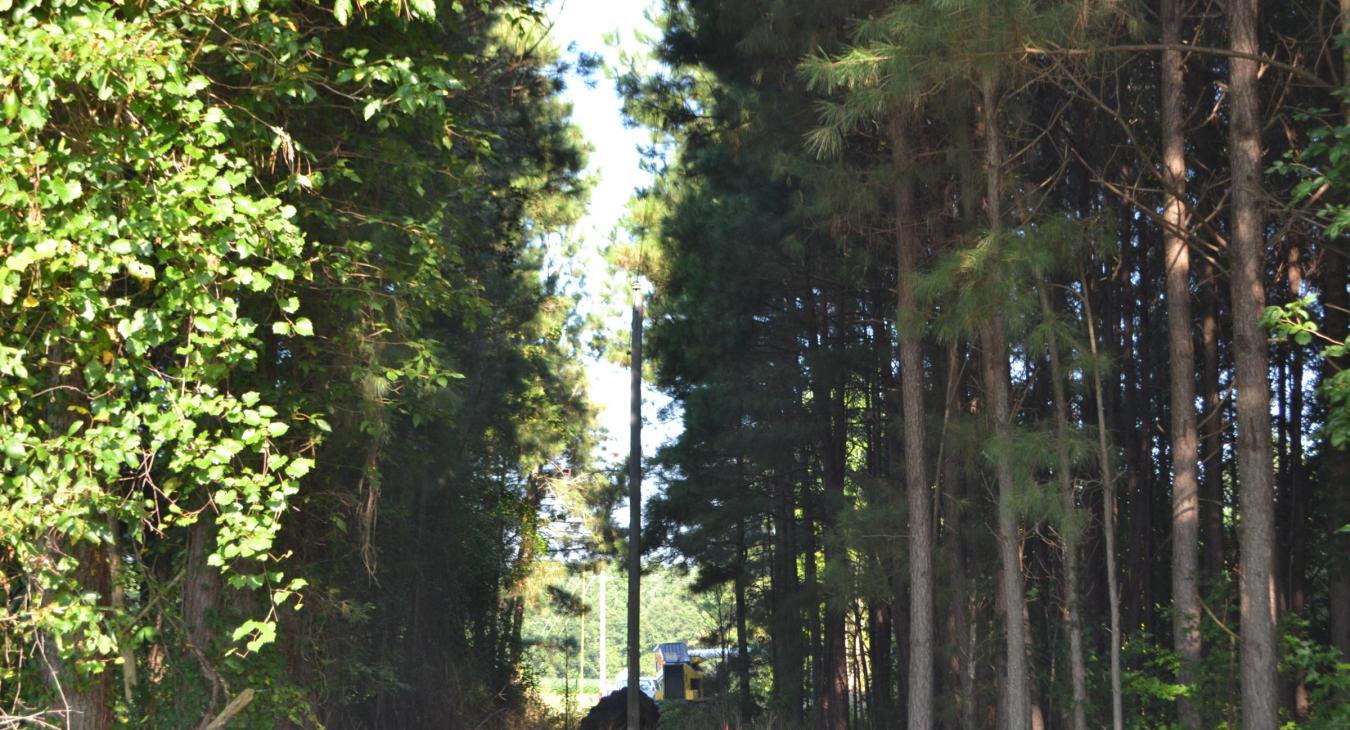May is the time of the year when people want to get in their yards and start planting. Before you plant a tree, look up from where you intend to plant and see if any power lines are overhead or nearby. Then, consider what that tree will look like several years from now. It may be hard to imagine, but the small tree you plant today could grow as tall as 100 feet.
We recognize that trees are a vital part of a healthy and vibrant community, providing ecological, aesthetic, and economic benefits. However, trees can grow into power lines, creating hazardous conditions and causing power outages. You can do your part by ensuring the tree you plant is the right tree in the right place.
When planting trees, their location can profoundly impact the integrity of power lines, influencing the reliability and safety of our electrical system. To mitigate potential issues, plant large trees at least 35 to 40 feet away from the center of power lines. This ensures a 10 to 15 feet clearance for mature trees with a sprawling branch span of 40 feet in diameter. Small trees and large shrubs can be planted within 35 feet of power lines, but their height should not exceed 15 feet.
The weather is turning warmer, and spring is just around the corner! Before beginning any landscaping or outdoor projects that require digging, electric co-op members are reminded to call 811 to notify local utilities and have underground pipes and wires marked. The national 811 “Call Before You Dig” phone number links residents to a local call center, which then dispatches local utility companies to mark underground utility lines, pipes, and cables with paint or flags so you know what’s below. In North Carolina, residents should call at least 72 hours before beginning to dig. Calling 811 before every project helps save lives, avoid costly penalties from hitting underground lines, and protect infrastructure.
At Edgecombe-Martin County EMC, we strive to balance maintaining beautiful surroundings and ensuring a reliable power supply by keeping power lines clear in rights of way (ROW). While we recognize and appreciate the beauty of trees, there are three main benefits to tree trimming in ROW areas: Safety, Reliability, and Affordability.
From a safety aspect, overgrown vegetation and trees pose a risk to power lines. If trees are touching power lines in our members’ yards, they can pose a grave danger to families. If children can access those trees, they can potentially climb into a danger zone. Electricity can arc, or jump, from a power line to a nearby conductor like a tree. A proactive approach also diminishes the chances of fallen branches or trees during severe weather events that make it more complicated and dangerous for line technicians to restore power.
One of the biggest benefits of a proactive vegetation management program is reliability. Strategic tree trimming reduces the frequency of downed lines causing power outages. Generally speaking, healthy trees don’t fall on power lines, and clear lines don’t cause problems. Trimming and pruning keep lines clear to promote reliability. At Edgecombe-Martin County EMC, trees are the number one cause of power outages, with 106 incidents in the past year.
As a not-for-profit cooperative, Edgecombe-Martin County EMC strives to keep costs in check to maintain affordable rates. If trees grow too close to power lines, the potential for expensive repairs also increases. Effective tree trimming and other vegetation management efforts keep costs down for everyone.
Our right-of-ways are managed on a four-year rotation, allowing us to continually address vegetation growth across our entire distribution and transmission systems. A large part of our distribution system right-of-way is pruned using bucket trucks and personnel trained in cutting around power lines. This same method is used for trimming around service drops on a member’s property. Additionally, we utilize sky trimming equipment for difficult terrain and selective herbicide spraying to reduce the need for cutting and mowing in specific areas.
Investing in right-of-way maintenance is not just about keeping the landscape tidy—it’s a strategic effort to ensure a safe, reliable, and resilient power supply. By understanding the costs involved and the direct impact on preventing outages, we can make informed decisions that benefit both the co-op members and the communities we serve.

